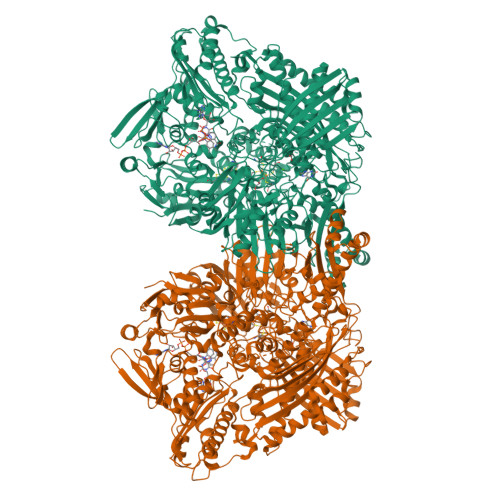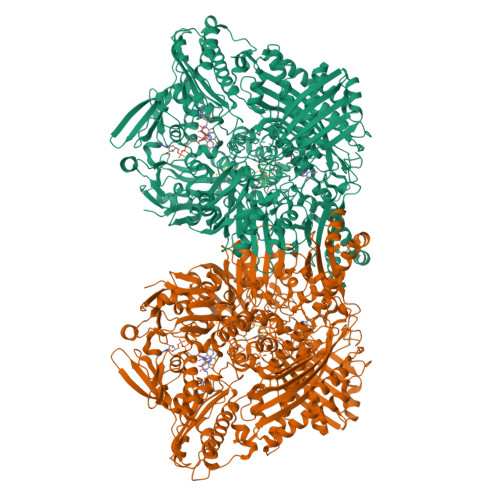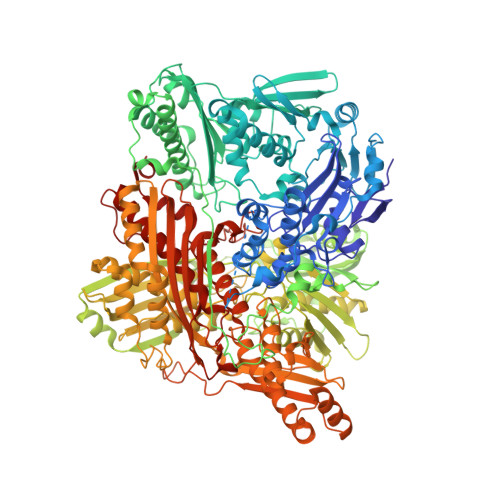The C-terminal peptide plays a role in the formation of an intermediate form during the transition between xanthine dehydrogenase and xanthine oxidase.
Nishino, T., Okamoto, K., Kawaguchi, Y., Matsumura, T., Eger, B.T., Pai, E.F., Nishino, T.(2015) FEBS J 282: 3075-3090
- PubMed: 25817260
- DOI: https://doi.org/10.1111/febs.13277
- Primary Citation of Related Structures:
4YRW, 4YSW, 4YTY, 4YTZ - PubMed Abstract:
Mammalian xanthine oxidoreductase can exist in both dehydrogenase and oxidase forms. Conversion between the two is implicated in such diverse processes as lactation, anti-bacterial activity, reperfusion injury and a growing number of diseases. We have constructed a variant of the rat liver enzyme that lacks the carboxy-terminal amino acids 1316-1331; it appears to assume an intermediate form, exhibiting a mixture of dehydrogenase and oxidase activities. The purified variant protein retained ~ 50-70% of oxidase activity even after prolonged dithiothreitol treatment, supporting a previous prediction that the C-terminal region plays a role in the dehydrogenase to oxidase conversion. In the crystal structure of the protein variant, most of the enzyme stays in an oxidase conformation. After 15 min of incubation with a high concentration of NADH, however, the corresponding X-ray structures showed a dehydrogenase-type conformation. On the other hand, disulfide formation between Cys535 and Cys992, which can clearly be seen in the electron density map of the crystal structure of the variant after removal of dithiothreitol, goes in parallel with the complete conversion to oxidase, resulting in structural changes identical to those observed upon proteolytic cleavage of the linker peptide. These results indicate that the dehydrogenase-oxidase transformation occurs rather readily and the insertion of the C-terminal peptide into the active site cavity of its subunit stabilizes the dehydrogenase form. We propose that the intermediate form can be generated (e.g. in endothelial cells) upon interaction of the C-terminal peptide portion of the enzyme with other proteins or the cell membrane. Coordinate sets and structure factors for the four crystal structures reported in the present study have been deposited in the Protein Data Bank under the identification numbers 4YRW, 4YTZ, 4YSW, and 4YTY.
Organizational Affiliation:
Department of Biochemistry and Molecular Biology, Nippon Medical School, Tokyo, Japan.

























